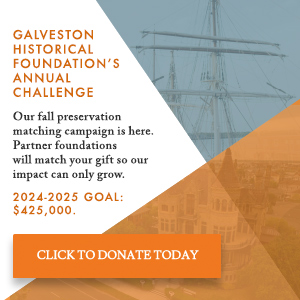KON TIKI RAID AND AFTERMATH
 On July 4, 1976, most Americans celebrated the long-awaited Bicentennial of the US. Across the country, small towns and large cities produced spectacular public displays recognizing the nation’s 200-year birthday. In Galveston, however, 39 men arrested at the Kon Tiki Club and Baths would not be celebrating. The TABC, with the Galveston Police Department, instigated a raid of unmatched proportions in the state on the night of July 4th. The lives of the arrested men would be forever changed.
On July 4, 1976, most Americans celebrated the long-awaited Bicentennial of the US. Across the country, small towns and large cities produced spectacular public displays recognizing the nation’s 200-year birthday. In Galveston, however, 39 men arrested at the Kon Tiki Club and Baths would not be celebrating. The TABC, with the Galveston Police Department, instigated a raid of unmatched proportions in the state on the night of July 4th. The lives of the arrested men would be forever changed.
In the following few weeks and months, gay and lesbian organizations and newspapers around the state and country informed their communities of the arrests. Local gay men banded together to raise funds for a legal challenge to the raid. The nascent Dallas Gay Activists Alliance and other activist groups expanded its advocacy program to oppose further TABC-initiated raids in Texas. In some ways, this raid constituted one of the last direct attacks on gay men in the state and activated gay political organizations as never before possible.
JAMES LYNN KEPNER (1923-1997)
Image courtesy of andrejkoymasky.com.
 Kepner might be one of the best-known gay activists in the nation and least known on Galveston Island. His date of birth in 1923 is still unsettled, but the story he told was that he was found by his adoptive mother under an Oleander bush wrapped in a Houston newspaper. In the 1940s, he acknowledged his homosexuality when applying for the draft in World War II and moved to San Francisco with his father, a railroad worker. While he eventually relocated to Los Angeles and lived there most of his life, Kepner would begin almost immediately to collect documents that traced the history of gays and lesbians, a task he continued until his death.
Kepner might be one of the best-known gay activists in the nation and least known on Galveston Island. His date of birth in 1923 is still unsettled, but the story he told was that he was found by his adoptive mother under an Oleander bush wrapped in a Houston newspaper. In the 1940s, he acknowledged his homosexuality when applying for the draft in World War II and moved to San Francisco with his father, a railroad worker. While he eventually relocated to Los Angeles and lived there most of his life, Kepner would begin almost immediately to collect documents that traced the history of gays and lesbians, a task he continued until his death.
Kepner was an inquisitive man who assumed many roles, including journalist, gay activist, biographer, and historian. He participated in every major homophile or gay organization from the 1950s into the 1990s. His collection of documents and writings eventually would constitute one of the largest collections of gay and lesbian resources in the world, ONE Archives in Los Angeles. Jim Kepner, with little formal education except for his diploma from Ball High, would eventually become one of the most highly regarded historians of gay and lesbian history of the twentieth century.
GALVESTON GENDER IDENTITY CONFLICT
 A February 1887 story in the Galveston Daily News reported a “queer” occurrence at St. Mary’s Infirmary on the previous day. Tabitha Young, a black woman who sometimes went by “Titie” or “Titia” arrived at the infirmary’s emergency facilities for treatment. She had died on the short journey from her alley home in the East End and thus became the object of an “inquest” to identify her cause of death. The attendant doctors observed her as having some unusual appearance to her genitalia and possibly being hermaphrodite. The newspaper did not carry another story about the inquest, but Titie had a short and interesting court record. A few years before her death, the police department arrested her for assault charges against another domestic worker and black woman. The author of the report described Titie as being of “mammoth proportions.” She was buried a few days later in the pauper’s field and identified on her death certificate as a black male, 40-50 years of age, with an unknown occupation and cause of death.
A February 1887 story in the Galveston Daily News reported a “queer” occurrence at St. Mary’s Infirmary on the previous day. Tabitha Young, a black woman who sometimes went by “Titie” or “Titia” arrived at the infirmary’s emergency facilities for treatment. She had died on the short journey from her alley home in the East End and thus became the object of an “inquest” to identify her cause of death. The attendant doctors observed her as having some unusual appearance to her genitalia and possibly being hermaphrodite. The newspaper did not carry another story about the inquest, but Titie had a short and interesting court record. A few years before her death, the police department arrested her for assault charges against another domestic worker and black woman. The author of the report described Titie as being of “mammoth proportions.” She was buried a few days later in the pauper’s field and identified on her death certificate as a black male, 40-50 years of age, with an unknown occupation and cause of death.
Titie’s story raises questions about gender identification in the late 19th century in Galveston, then the largest and most prosperous city in Texas. Was she gender-conflicted, or was she intersexed? Were her genitalia ambiguous at birth, or were the changes self-inflicted? Who is to know? Almost one hundred years after Titie’s death, a Gender Identity Clinic opened at UTMB in the 1970s. The clinic, largely under the direction of psychologist Dr. Paul Walker offered counseling and assisted in medical intervention in one of the first clinics of its kind in the United States. The clinic closed about 1980 but left a legacy of gender identity counseling that survives on the island.
ABOUT GALVESTON HISTORICAL FOUNDATION
GHF was formed as the Galveston Historical Society in 1871 and merged with a new organization formed in 1954 as a non-profit entity devoted to historic preservation and history in Galveston County. Over the last sixty years, GHF has expanded its mission to encompass community redevelopment, historic preservation advocacy, maritime preservation, coastal resiliency and stewardship of historic properties. GHF embraces a broader vision of history and architecture that encompasses advancements in environmental and natural sciences and their intersection with historic buildings and coastal life and conceives of history as an engaging story of individual lives and experiences on Galveston Island from the 19th century to the present day.







